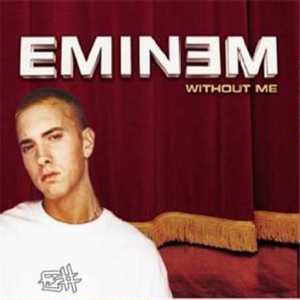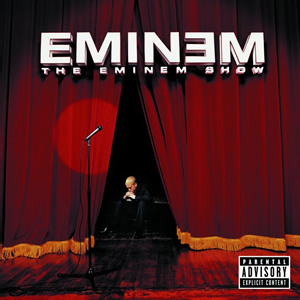The song came out of the album, following the others through its production. It made its way half a decade later than the first of them, but it fared better than the first ever could. “Without Me” came right from his mouth to the market with not even than three months in between. The song is an introduction, three verses, and a chorus throughout all of which there is a beat that runs so cleanly it gets inside the mind of everyone who tries to give it a listen. Eminem’s song stands back from the rest in its desire for change, trying to be different, hitched to the idea that it can make a change in this world. “Without Me,” like all that came before it, wants to rebel against a system, but what system at first is a mystery. In its creation and content inside, “Without Me” follows the rap, rap, rap, of the song and the beat while all the while saying it the opposite.
Everything can be reduced to the timing in the analysis of its creation. Eminem put “Without Me” into the world right when he finished with his production of 8 Mile, which he created to honor none other than his own story. All the production came intertwined with his story in a movie, a movie about himself no less. Whatever it is, announcing “Guess who’s back/ back again/ Shady’s back/ tell a friend” sure has a nice egotistical ring to it. If that man were honestly trying to break some kind of system, he would surely not announce it with the fullest intent of getting caught, about which he does not stop bragging. All while announcing his intentions in his actions by making a movie, Eminem surely could not be rebelling in earnest.

Onto the structure of the song, something seems a bit out of touch the way he tries to cram words together into a pattern that he can make fit the message. All the rhymes seem complicated in a way that shows off and provides some form of inaccessibility to whomever tries to emulate the style. All the words come together in a pattern that flows like a stream but is as easy to figure out as thick mud. The rhymes and rhythms take on lives of their own as they twist and turn and ebb and flow through a song on top of, what seems at first, seems to be a simple background beat that gets wildy more complicated the more it is examined. A man trying to rebel and start his movement would keep things simple, but this one cannot be just a regular person. He has to be an icon. Whatever attitude of rebellion he tries to claim goes whish, whish, whish right out the door with those lyrics all strung together in their unnaturally neat and unnaturally tidy order. Every rhyme and every word in it is too complicated to be simple.
All the ways the words come together comes with the words themselves, organized into three not-so-neat verses and a chorus desperate to carry meaning.
The first verse of “Without Me” enters rebellious, strong, and willing to incite anger. A violent alter ego named Slim Shady takes control of the words in his attempt to return from a limbo land between albums and between influences. Shady insults the then-Vice President, all the while screaming about his heart problems and his wife; the words desperately trying to take on insubordinate lives of their own. Even while Eminem seemed to know he was making something for the mainstream, Slim Shady insists on being a nonconformist with his claims that he is “on the rag and ovulating.” Right at the end of the verse the words come together to threaten to take action against the Federal Communications Commission, immediately and harshly. This piece of music tries to intimidate the mainstream while actually being a part of it, the words ending while perpetually lingering.
The song then turns to the second verse after it makes its way through the chorus. Slim Shady or whoever is narrating stops his cause of actively rebelling with his self-conscious incitements of anger to shift over to a mockery of the rebellion he has just been trying to emulate. The words narrate a child, one who is “embarrassed” his parents still subscribe to that old-time rebellion and “listen to Elvis.” The words go on to tell a story of watered-down rebellion, the kind that those who are the mainstream continue to embrace. How bad it is to be a “rebel” when everyone is buying millions of copies of a song and providing a nameless man millions of dollars in profit. At the end of the second verse, the story goes to a line with the illuminating power needed to analyze the song. After that line the song gets easier, more understandable. The narrator offers his “ten cents, [his] two cents is free/ a nuisance, who sent for me?” The first half of the line deals with money and advice, advice and money. The advice is to get money somehow. Earn a ticket out is the advice. The second half provides the attitude toward rebellion that Slim Shady takes to extreme in the first verse. The rebellion is desired and wanted, feeding on consumers to make it happen, waiting for someone to buy the song and embrace the thinned version of rebellion it tries so hard to present.
The rhyme structure and the lyrics all lead down a path toward a fake revolution that is not one but pretends to be. No real rebel would come within a mile of “Without Me” and its central message, but the song tries to be devilish and fool listeners into thinking some would. Rebellion has become an official aesthetic of consumer society. The ones who are against consuming and consumerism are the spokespeople for it. According to some psychologists, rebellion against a perceived authority in this fashion “is really an act of dependency” (Pickhardt). “Without Me” and its claims to be rebellious are fictitious declarations stemming from consumerism acknowledged by the end of the song in its final verses.
In the 1950s, a theorist named Richard Hoggart published The Uses Of Literacy in which he argues revolution is a commodity with which to sell consumerist cultural products. Watered-down rebellion is thickened blood of mass-produced culture. 1) According to Hoggart, culture-producing corporations take money. 2) They drain the actual revolutionary spirit. 3) They replace it with fake cries for revolution. 4) The new fake revolution enters the marketplace masquerading as what it used to be. 5) People like the fake revolution and succumb to it. 6) Except. 7) Not all people are stupid. 8) Some people can deal with stress. 9) Eminem is not stupid and can deal with stress. 10) “Without Me” criticizes the fake revolution. 11) So the fake revolution does not go unnoticed. 12) Fake rebellion sells culture. 13) It weirdly makes sense.
Over thirty years after Hoggart wrote The Uses of Literacy, Dave Marsh, a song critic, published The Heart of Rock and Soul in which he analyses songs for their components. Everything from the artist to the album to the beat to the lyrics to the remakes to the general influence of a song is something for Marsh to consider as he ranks which songs are the best and which ones deserve to bear the honor of being one of the one thousand and one most influential songs the world has so far seen. Songs that cross racial lines are often good as far as Marsh is concerned for the purposes of his list. The 1950s was arguably the first time that white Americans created culture including songs with influences from other groups instead of trying to erase the culture and styles of people previously deemed inferior. Songs since the 1950s are Marsh’s study, and many of them are good. “Without Me” is a song by a white American written well after the 1950s.

“Without Me” has revolution against the old like many songs. The first verse comes from an angry alter-ego, its voice forming words that clash with the notions of control, of regulation, of restricting what gets played by radios or people’s mouths. The vice president and his wife are subjects for derision and anger, venting, screaming, protesting. The system almost buckles crack, crack, crack as it is under attack.
What “Without Me” provides is an acknowledgement of the co opted rebellion that forms its industry. The narrator becomes less hostile and acknowledges the new form of culturally allowable rebellion that has taken hold of the industry that the first verse laments. The difference between the old and the new, the actual rebellion and the sanctioned form, become apparent in the words of the song as with the song itself. Rap is not the rebellion it used to be; is has had a “tremendous influence on mainstream” (Blanchard). “Without Me” shows the issues presented by mass industrial rebellion to be too complex, rebellion industry some could call it.
Rebellion is no longer the act of rebellion it used to be but instead a central aesthetic of a consumer society. Opponents of the system are now its controllers and ideologues. “Without Me” starts with rebellion, if rebellion ever was there, then shifts to mocking the rebellion it proposed. In so many ways, Slim Shady is the definition of anti something or rebelling against whatever. Loud, strong, aggressive, insouciant. In so many other ways, though, Slim Shady is the opposite. Sanctioned, permissioned, mainstream, warranted. All of Slim Shady or Eminem’s “lawsuits are settled.” He has no more issues with society or consumer culture in the way it twists him or them into the image of defiance it so desperately wants to convey. At least he was smart enough to realize what was happening. At least he knew that whatever watered-down form of countering something he produced was what listeners wanted to hear. The FCC may have tried to ban him, but he got airplay nonetheless. Marsh knew it. Hoggart knew it. Apparently the real Slim Shady knew it too.
The song is a rabbit.